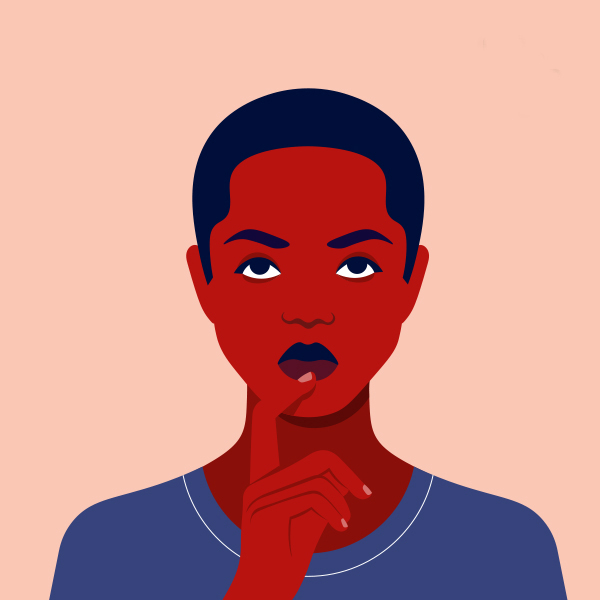Learn why we all have breasts and nipples, regardless if your teen was assigned female at birth, how they develop, and how to take care of your breasts.
Breasts, boobs, bust, bosom. Whatever you call them, one thing is true: All people have basic breast tissue and nipples, regardless of the sex assigned at birth or gender identity. Breast development is usually a sign that your child assigned female at birth is going through puberty.
Learn more about normal breast development and how to support your tween or teen as their breasts and nipples change through puberty.
First, What Is the Purpose of Nipples and Breasts?
Your teen or tween might wonder why they have nipples and breasts. The main reason the human body has breasts is to nourish newborn babies.
If and when a person becomes pregnant and gives birth, the breasts will go through even more changes. They may get larger as the mammary glands produce milk once the person gives birth. Hormones can also cause the nipples and areola to darken in color, which is thought to help make it easier for newborns to find the nipples when feeding.
Why Do Boys Have Nipples?
Nipples are not just unique to those assigned female at birth, but every person has the potential to have nipples in their male, female, or intersex bodies.
Even though our chromosomes help determine the biological sex (XX for female or XY for male, most often), the way your tween or teen’s body develops actually depends on chromosomes, hormones, and a few other factors. So even though breast tissue won’t always develop into a breast during puberty, the nipples (and areola) are there just in case!
HEADS UP > Though we at BLOOM use the term “boys” above, we will use they/them pronouns going forward. This guide helps you navigate your preteen or teen’s nipple and breast development, regardless of their gender identity.
Hormones trigger breasts to develop. Hormones are chemical messengers sent from our brains to different organs that cause changes to those organs. Hormones can also be produced by different organs, such as ovaries in those assigned female at birth and testes (testicles) in assigned male at birth.
During puberty, hormones from the ovaries tell the breast tissue to start developing and causes extra fat to be deposited in the breasts. In teens assigned male at birth, hormones from the testes usually stop breasts from developing, though some may have temporary breast growth at this time.
What Is Normal Breast Development?
As your tween develops breasts, they might wonder what is normal. Like all other parts of the body, breasts develop at different times. For some adolescents, it starts as early as 8 years of age. For others, not until around 13.
Regardless of what point your tween or teen’s breasts begin to develop, their body is making sure it happens at the right time for them. Reassure them that each body has its own timeline and to trust their bodies and this process. Their peers will experience changes in their bodies at different times. That’s okay. Let your tween or teen know that is normal and not something to be self-conscious about.
Breast Growth Stages During Puberty
When a young person goes through puberty, hormones cause a lot of changes in the body, including breast development.
Breast development usually starts under the surface of the nipple and areola, on the surface of the breast, with the growth of breast buds. These firm lumps form directly under the nipples and develop into clusters of mammary (milk) glands — kind of like clusters of grapes — and can be the only change in your tween or teen’s body for the first few years.
As your tween or teen approaches their first period, you and they might notice more visible signs of breast development. The estrogen in their bodies will cause fat deposits to fill in the areas around the mammary glands and ducts, giving their breasts a soft, smooth texture, and causing them to enlarge. Also, the clusters will continue to grow.
After they have their period, their breasts will continue to grow and mature. Their nipples and areola may also grow and darken a bit, though the rate of breast and nipple growth will differ for every person.
Stanford Medicine Children’s Health describes the five stages of breast development below:
| Breast Growth Stages | Description of Breast Development |
|---|---|
| Stage 1 | Only the tip of the nipple may be raised. |
| Stage 2 | Buds appear and the breast and nipple are slightly raised. The area around the nipple may get larger. |
| Stage 3 | Breasts will grow larger and breast tissue will start to develop. |
| Stage 4 | The areola and nipple become raised and distinct from the rest of the breast. |
| Stage 5 | The breast is considered mature. The breasts may become more rounded, with only the nipple raised. |
BLOOM TIP > If your teen wants to learn more on their own, encourage them to visit our TEEN HUB for information and tips personalized for them.

How to Help My Child With Breast and Nipple Care
Your teen or tween may feel a number of sensations and emotions as their breasts develop, some of which are pleasant, and some of which are not. For example, their nipples may be extra sensitive to touch and temperature, and may contract or become erect when touched or exposed to cold. The areola may also contract. They might also feel sore or uncomfortable around their period. This is all normal, and there are a few ways you can help support your young person as their breasts develop.
Suggest Gentle Massage
Sometimes your tween or teen’s breasts will feel so sore that they won’t want anything touching them, not even their shirt or bra. However, light massage with their own two hands can sometimes help with the growing pains they are feeling. Encourage them to try this in the shower, especially if the warm water also helps.
Suggest Breast Itch Relief Options
The skin on the breasts can itch during puberty, especially if the breasts are growing quickly. Massaging a light oil with Vitamin E into the skin can minimize both itching and stretch marks.

Ready to elevate your parenting? Become a member of the BLOOM family today!
Gain access to workshops, coaching, and a network of supportive parents. Don’t navigate this journey alone –
Provide Support Around Bras & Comfortable Coverage
Your tween or teen might wonder what is the “right” age to start wearing bras. The answer is there is no right age and it really depends on their comfort level.
While bras are not necessary to protect or support your young person’s breasts in any way, wearing one may help them feel more secure as their body changes. You can help them look for a sports or training bra, as these are usually more comfortable than those with an underwire. When shopping for breast support and bras, you can help your tween or teen find a bra that doesn’t fit too tightly or irritate the skin under their arms or on their back.
Also be sure to remind them to give their breasts some freedom. Wearing a bra constantly can cause rashes or irritation under the breasts, under the arms, or on the shoulders. They should always remove their bra when they sleep.
Teach Them The Importance of the Breast Self Exam
It is a good idea to teach your tween or teen the importance of getting to know their changing body and screen for breast cancer and other abnormal breast changes. And, part of this is monthly (or even more frequent) breast exams while taking a shower.
BLOOM TIP >
Encourage your child to do a self exam any time they remember. Here Dr. Staci Tanouye shares her top tips for breast self exams!
Encourage your child to do a self exam any time they remember, as their breasts will change depending where they are at in their menstrual cycle, puberty, and changes in hormone levels. If they just got their period, suggest they do an exam in about a week after their period ends to make sure their breasts aren’t too tender. Encourage them to administer a self exam often, so they can get comfortable with their changing body and breasts, and learn what is normal for them and their body.
If they feel a lump, tell them not to be worried. During puberty, they can expect lots of changes each month, like new lumps and tender areas. After puberty, their breasts will feel more the same from month to month. Then, new changes like lumps are things they will want to notice during their self-exam and talk about with their doctor.
Lumps don’t necessarily mean breast cancer, but if they want peace of mind, have them talk with their doctor.
Helping Your Teen Accept Their Breasts and Nipples
Breasts come in all shapes, sizes, colors, and lumps. Celebrate breast and nipple diversity with your tween or teen by helping them learn about the variety of breasts and nipples.
Lopsided Breasts
Did you know that it’s perfectly normal for breasts to be two different sizes or shapes? This is called ‘asymmetry’ and is very common. If your young person feels uncomfortable with the appearance of their breasts, there are some options that can help. Wearing a padded insert in their bra may help if the asymmetry is noticeable through clothing.
Another kind of ‘asymmetry’ has to do with the nipples. Nipples can point in two different directions. This is normal and is nothing to be concerned about.
Too Big Breasts
Breasts come in all sizes, but some breasts grow much larger than is proportional to the rest of the individual’s body and can cause discomfort.
This may just be due to genes, but regardless of the reason, if your young person’s breasts cause back or shoulder pain, know that there may be solutions. Talk with their doctor about what can be done to help alleviate the pain.
More Than Two Nipples
On occasion, our bodies do things a bit differently, and sometimes that means the appearance of extra nipples. These are usually located below the breasts, on the stomach, or under the arms. They are called supernumerary (more than the usual number) nipples. They are usually harmless, but it can be good to talk with your young person’s doctor if they have these.
Innie Nipples
Most of the time, nipples protrude or stick out from the surface of the breast, but sometimes, they lie flat or even slightly under the surface of the breast. This is referred to as inverted nipples. They usually pop out when they become erect or if pressure is applied behind them with the fingers. “Retracted nipple” is the term for a similar but slightly nipple.
If your young person’s nipples seem inverted and have always been this way, this is their normal and it is nothing to be worried about. If, however, this development is new for them, talk to their doctor just to make sure nothing else is going on.
Breasts With Lumps
Most breast lumps are completely normal, but on occasion, they can be concerning. One type of lump that is common during puberty is called a fibroadenoma. These are usually harmless but may grow to the point where they need to be removed.
How to Answer Common Adolescent Breast Health Questions
As your teen or tween begins to develop breasts and go through puberty, it’s completely normal that they will have questions about what is happening in their body. Here are some common questions and how to help support your child.
What Age Do People Normally Develop Breasts? Am I late?
Your teen or tween might ask you how do you know when your breasts are fully grown? Breasts usually begin to develop between the ages of 8 and 13, though can be earlier or later depending on the person. If your young person is 13 or older and has no breast development at all, this could be due to having very little body fat. Dancers, gymnasts, athletes, exercisers, and people with disordered eating (like anorexia) may notice this. If your teen is older than 13, has no breast development and you or your teen are concerned, make sure you talk to your doctor. It can be completely normal, but may give you both peace of mind.
I Shouldn’t Have Breasts. What’s Happening With My Body?
The term for this is Gynecomastia, and it refers to when XY individuals (i.e., boys) develop breasts during puberty. Tell your tween or teen that this happens occasionally, is usually temporary, and resolves on its own over time.
Parenting can leave you feeling overwhelmed and alone, but at BLOOM you have a team behind you. Access Live and On-Demand Workshops led by the experts. Get answers to your most pressing questions through our Ask the Expert Platform. Find your village and share ideas in our Community Group surrounded by fellow parents and caregivers. Or get personalized coaching in 1-on-1 Coaching Sessions tailored to your needs. We know raising tweens and teens is hard – that’s why we created BLOOM to nurture you through the challenges and help you flourish.
